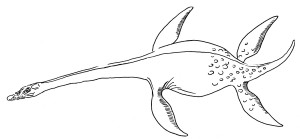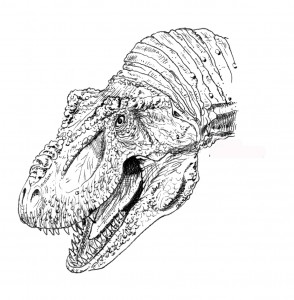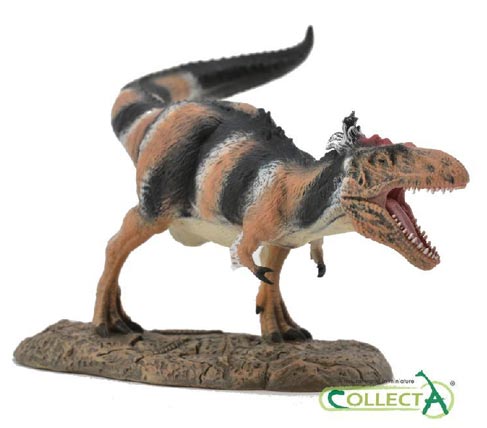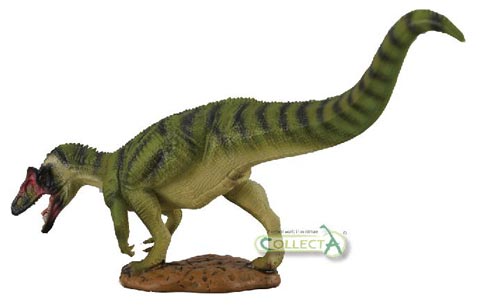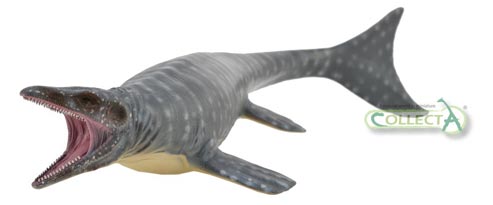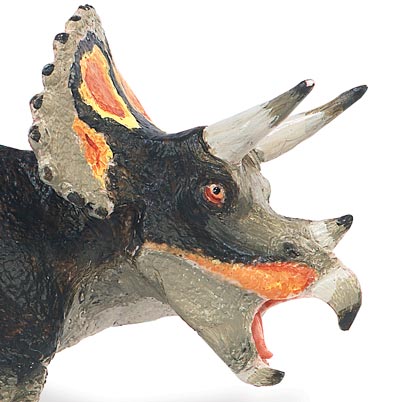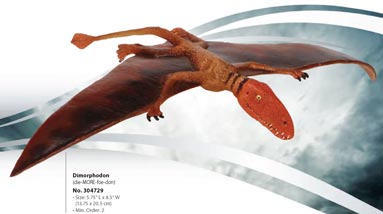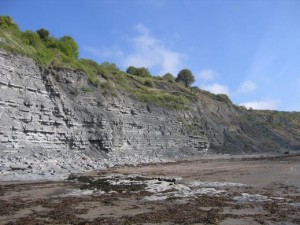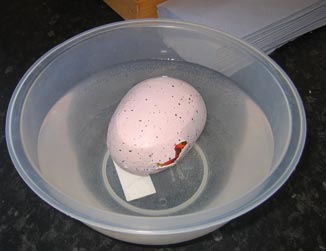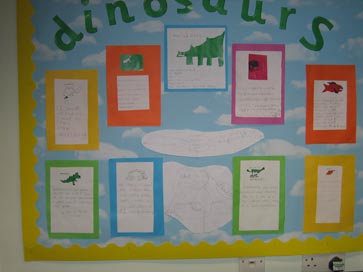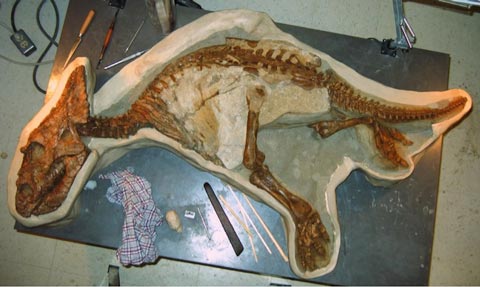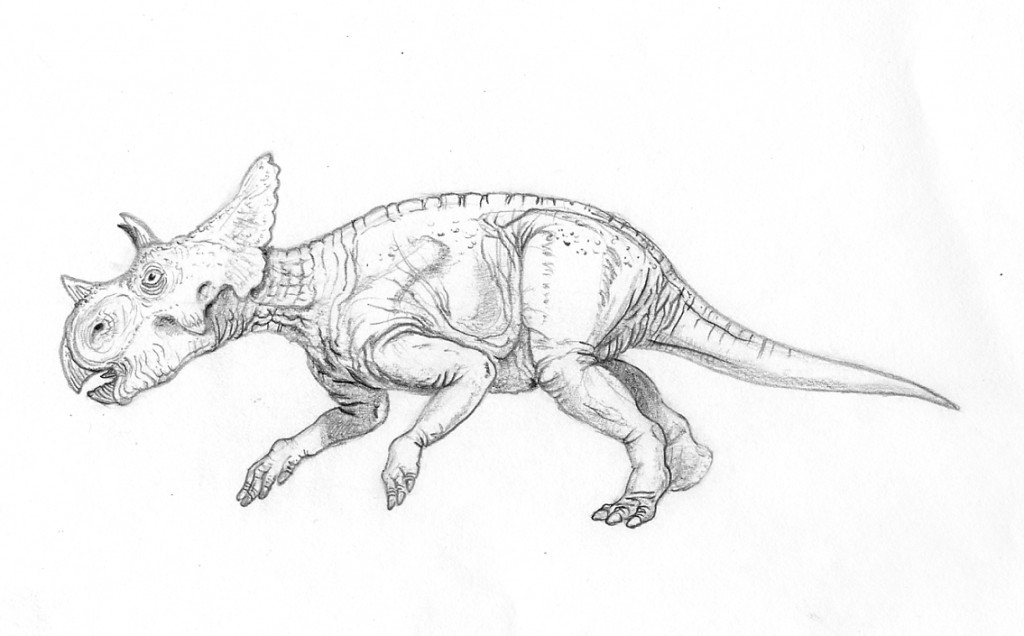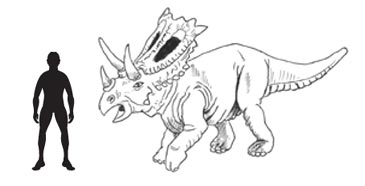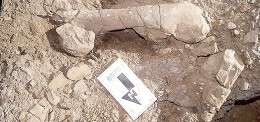Siats meekerorum – The Carcharodontosaurid that Kept the Tyrannosaurs in Check
The trouble with dinosaur fossils is that there is most certainly not anything like a record of dinosaur evolution and development throughout their time dominating terrestrial environments. True, palaeontologists have been able to build up a remarkable degree of knowledge and some ancient ecosystems are quite well understood. This said, we really have only the merest glimpse of the Dinosauria, or indeed of other terrestrial vertebrates for much of the Mesozoic. Take for example, the United States.
Dinosaurs from the USA
A tremendous amount of dinosaur fossil material has been discovered and indeed thanks to the likes of the Morrison Formation, scientists have been able to build up a detailed impression of life in the Late Jurassic. With the wonderful Dinosaur Park Formation of Alberta, palaeontologists have an insight into an ecosystem from the Campanian faunal stage of the Cretaceous. The likes of the Badlands and Hell Creek have provided evidence of the dinosaur fauna that roamed at the very end of the Cretaceous period, but what about all the bits in between?
Apex Predators
Take for example, the issue of apex predators. Allosaurids such as Allosaurus fragilis and Saurophaganex maximus may have been the largest meat-eating dinosaurs in the western United States during the Late Jurassic whilst the tyrannosaurids such as Daspletosaurus (D. torosus) and the recently described Lythronax argestes topped the predator tree towards the end of the Age of Dinosaurs. Of course, thanks to the Hell Creek Formation, we can be fairly certain that at the very end of Cretaceous the likes of T. rex ruled.
Siats meekerorum
Step forward Siats meekerorum, a newly described apex predator that roamed Utah approximately 98 million years ago. Here is evidence of an apex predator, a dinosaur approaching perhaps 3,000 kilogrammes in weight and at least ten metres long, possibly the apex predator in this part of the world during the Cenomanian faunal stage.
Terror of the Tyrannosaurs – Siats meekerorum
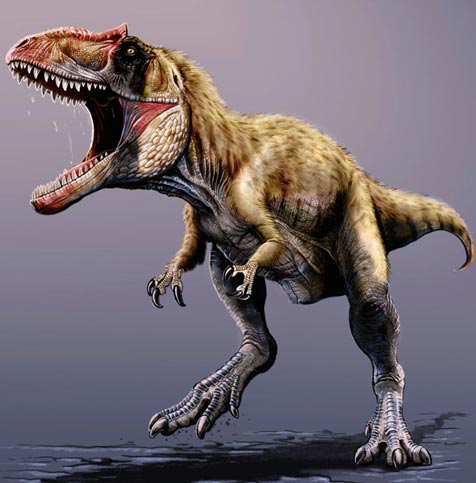
Fearsome Cenomanian predator.
Picture credit: Jorge Gonzales
New Dinosaur Discovery
This new dinosaur discovery, (recently new that is, as the fossils were found in 2008), may help explain a mystery surrounding the tyrannosaurs of northern latitudes. Although, this particular group of meat-eating dinosaurs had their origins back in the Jurassic, they seem not to have grown really big and become apex predators until towards the end of the Cretaceous. Dinosaurs such as the fearsome Siats meekerorum, pronounced see-atch me-ker-roar-rum, may be the reason why.
Scientists from the Field Museum (Chicago), North Carolina State University and the North Carolina Museum of Natural Sciences, set about exploring the strata in the Cedar Mountain Formation of Utah. The team’s work, published in the academic journal “Nature Communications” outlines the discovery of a carcharodontid dinosaur, one that was around ten metres in length and a candidate for the top predator position in this part of the western United States around 98 million years ago.
A Partial Specimen
The partial specimen, consisting of elements from the pelvis, a femur, fragmentary lower leg bones, toe bones and some vertebrae including caudal vertebrae represents only about 4% of the entire skeleton but from this largely disarticulated and scattered material, the researchers were able to determine that they had found evidence of a formidable predator. This dinosaur gets its genus name from Siats, a mythical man-eating monster from local, Native American tribal legend.
The species name honours the Meeker family for their long-term financial support of the palaeontology department of the Field Museum. It was Lindsay Zanno (Director of Palaeontology at the North Carolina State University/North Carolina Museum of Natural Sciences), who made the discovery. It took two summer expeditions to carefully remove the fossil material and prepare them in the laboratory.
Carcharodontosauridae Family
Siats meekerorum has been classified as a member of the Carcharodontosauridae family, a group of large to gigantic carnosaurs with strong affinities to the allosaurs which lived in the Western Hemisphere, Europe, Africa and Asia. Little is known about the majority of the members of the Carcharodontosauridae family, but one thing is for sure, a number of them were massive, bigger than Tyrannosaurus rex and potentially amongst the largest terrestrial predators that have ever lived.
Siats meekerorum is only the second member of this dinosaur family to have been discovered in North America. The first carcharodontosaur was Acrocanthosaurus atokensis, fossils of which have been found in Maryland, Texas and Oklahoma. It has been estimated that the fossils of S. meekerorum are ten million years younger than those of the youngest Acrocanthosaurus material, thus the carcharodontosaurids existed in North America later than previously thought.
A Model of Acrocanthosaurus (A. atokensis)

Fierce meat-eater – the dinosaur Acrocanthosaurus.
Picture credit: Everything Dinosaur
Acrocanthosaurus
Remarking on the fact that Acrocanthosaurus was named and described back in 1950 Dr Zanno stated:
“It’s been sixty-three years since a predator of this size has been named from North America. You can’t imagine how thrilled we were to see the bones of this behemoth poking out of the hillside.”
Dr Peter Makovicky, from the Field Museum of Natural History assisted Dr Zanno in the collection, and study of this fossil material. The researchers were able to establish that although the fossil bones represented an individual over ten metres in length, and perhaps weighing as much as 3,000 kilogrammes, this dinosaur was not fully grown when it died. Analysis of the partial femur that was excavated reveals that had the bone been complete, it would have been only about ten centimetres smaller than that of Acrocanthosaurus, so it could be speculated that when fully grown Siats meekerorum may have matched the early carcharodontosaurid Acrocanthosaurus in size.
A spokesperson from Everything Dinosaur commented:
“Size estimates for A. atokensis vary, but most palaeontologists agree that this dinosaur may have reached lengths in excess of twelve metres and perhaps weighed 4 tonnes or more. Although, slimmer and more lightly built than the very last of the tyrannosaurs these meat-eaters were formidable predators and it is quite likely that a fully grown Siats meekerorum would have been around twelve metres in length too. This means that S. meekerorum is vying with Acrocanthosaurus for being the second largest Cretaceous theropod dinosaur discovered in North America.”
Representing Different Subfamilies
Although Siats and Acrocanthosaurus are both members of the Carcharodontosauridae family, they represent different sub-families. There is a lot of debate with regards to the taxonomic affinities of carcharodontosaurs but in this instance, Siats seems to have affinities to the neovenatorids, a sub-family of carcharodontosaurids that are geographically dispersed with fossils found in Europe, South America, China, Japan and Australia. This is the first neovenatorid known from North America.
For Dr Zanno, who specialises in studying theropod dinosaurs, this discovery helps fill a gap in the apex predators of North America from the allosaurids of the Jurassic, to the earlier carcharodontosaurids such as Acrocanthosaurus, with Siats meekerorum following on before the emergence of the robust, heavy-set tyrannosaurs such as Daspletosaurus, Teratophoneus and Tyrannosaurus rex.
Dr Zanno added:
“This thing is gigantic. There is nothing even close in this ecosystem to the size of this animal that could have been interpreted as an apex predator.”
Theropod Dinosaurs
There were other theropods in this Cenomanian ecosystem. Teeth found in the same strata indicate the presence of tyrannosauroids, the distant ancestors of the mighty T. rex. However, these tyrannosaurs were small-bodied, fast running, cursorial predators and simply no match for Siats meekerorum. There has been no evidence found in this strata to suggest the presence of an equal sized tyrannosaur challenging the likes of Siats for the apex predator position.
For models and replicas of theropods and other dinosaurs: PNSO Age of Dinosaurs Models and Replicas.
The spokes person from Everything Dinosaur explained:
“Think of Siats meekerorum as the “lion of the Cenomanian” with the much smaller Tyrannosauroids the equivalent of jackals. Tyrannosaurs may well have fed of the remains of kills but they would have been no match for Siats and probably stayed well clear of such a large carnivore, which was many times their body weight.”
Wary Tyrannosaurs Stay Clear of the Dominant Siats meekerorum
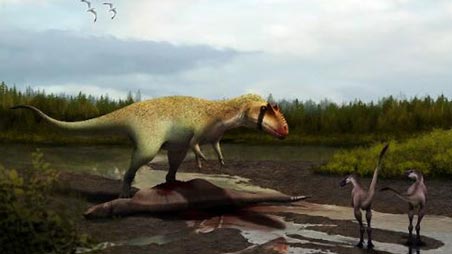
Siats meekerorum has nothing to fear from these two tyrannosaurs.
Picture credit: Julio Lacerdo
The discovery of Siats meekerorum extends the time when allosaurids were present in North America by ten million years. It also provides evidence of large allosaurs sharing the same environment as small-bodied tyrannosauroids. This research supports the hypothesis that the extinction of the Allosauridae in terrestrial ecosystems of North America permitted the rise of the tyrannosaurs which went onto become the dominate, apex predators of Late Cretaceous food webs.
It is likely that the presence of such a large carnivorous dinosaur indicates that a very rich faunal ecosystem may have been preserved in the rocks of the Cedar Mountain Formation. Everything Dinosaur expects announcements of other dinosaur discoveries from excavations carried out, possibly the naming and describing of a number of new herbivorous dinosaur species.



